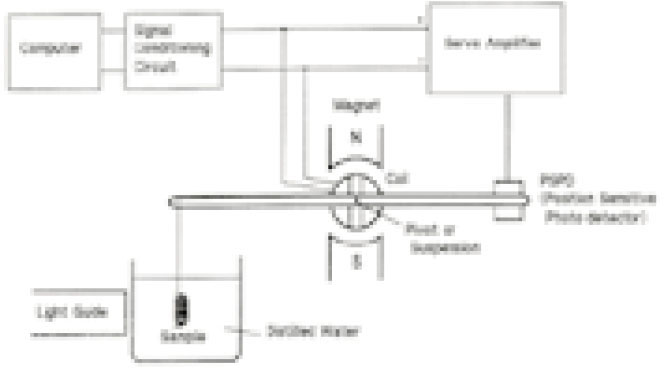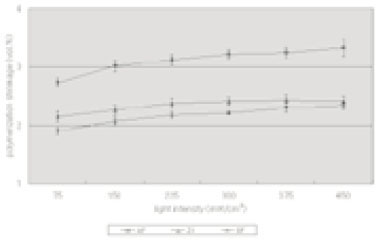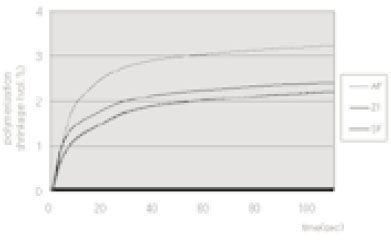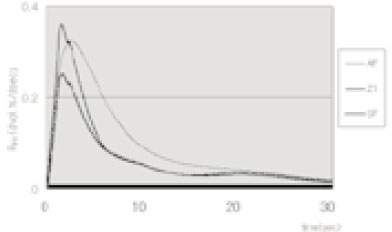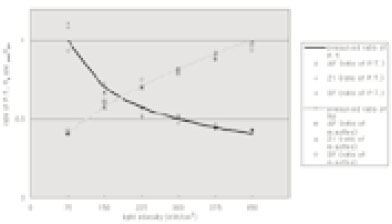J Korean Acad Conserv Dent.
2002 Mar;27(2):135-141. 10.5395/JKACD.2002.27.2.135.
Effect of light intensity on the polymerization rate of composite resin using real-time measurement of volumetric change
- Affiliations
-
- 1Department of Conservative Dentistry, College of Dentistry, Seoul National University, Korea.
- 2Department of Chemical Engineering, Chung-Ang University, Korea.
- 3Department of Conservative Dentistry, College of Dentistry, Chonbuk National University, Korea.
- KMID: 1987272
- DOI: http://doi.org/10.5395/JKACD.2002.27.2.135
Abstract
OBJECTIVES
The aim of this study is to evaluate the effect of light intensity variation on the polymerization rate of composite resin using IB system (the experimental equipment designed by Dr. IB Lee) by which real-time volumetric change of composite can be measured.
METHODS
Three commercial composite resins [Z100(Z1), AeliteFil(AF), SureFil(SF)] were photopolymerized with Variable Intensity Polymerizer unit (Bisco, U.S.A.) under the variable light intensity (75/150/225/300/375/450mW2) during 20 sec. Polymerization shrinkage of samples was detected continuously by IB system during 110 sec and the rate of polymerization shrinkage was obtained by its shrinkage data. Peak time(P.T.) showing the maximum rate of polymerization shrinkage was used to compare the polymerization rate.
RESULTS
Peak time decreased with increasing light intensity(p<0.05). Maximum rate of polymerization shrinkage increased with increasing light intensity(p<0.05). Statistical analysis revealed a significant positive correlation between peak time and inverse square root of the light intensity (AF:R=0.965, Z1:R=0.974, SF:R=0.927). Statistical analysis revealed a significant negative correlation between the maximum rate of polymerization shrinkage and peak time(AF:R=-0.933, Z1:R=-0.892, SF:R=-0.883), and a significant positive correlation between the maximum rate of polymerization shrinkage and square root of the light intensity (AF:R=0.988, Z1:R=0.974, SF:R=0.946).
DISCUSSION AND CONCLUSION
S: The polymerization rate of composite resins used in this study was proportional to the square root of light intensity. Maximum rate of polymerization shrinkage as well as peak time can be used to compare the polymerization rate. Real-time volume method using IB system can be a simple, alternative method to obtain the polymerization rate of composite resins.
Figure
Cited by 1 articles
-
Effect of instrument compliance on the polymerization shrinkage stress measurements of dental resin composites
Deog-Gyu Seo, Sun-Hong Min, In-Bog Lee
J Korean Acad Conserv Dent. 2009;34(2):145-153. doi: 10.5395/JKACD.2009.34.2.145.
Reference
-
1. Feilzer AJ, de Gee AJ, Davidson CL. Curing contraction of composites and glass-ionomer cements. J Prosthet Dent. 1988. 59:297–300.
Article2. Tobolsky AV, Leonard F, Roeser GP. Use of polymerizable ring compounds in constant volume polymerization. J Polym Sci. 1948. 3:604–606.3. Retief DH. Do adhesives prevent microleakage? Int Dent J. 1994. 44(1):19–26.4. Davidson CL, de Gee AJ. Relaxation of polymerization contraction stresses by flow in dental composites. J Dent Res. 1984. 63(2):146–148.
Article5. Feilzer AJ, Dooren LH, de Gee AJ, Davidson CL. Influence of light intensity on polymerization shrinkage and integrity of restoration-cavity interface. Eur J Oral Sci. 1995. 103:322–326.
Article6. Feilzer AJ, de Gee AJ, Davidson CL. Quantitative determination of stress reduction by flow in composite restorations. Dent Mater. 1990. 6:167–171.
Article7. Mehl A, Hickel R, Kunzelmann KH. Physical properties and gap formation of light-cured composites with and without 'softstart-polymerization'. J Dent. 1997. 25(3-4):321–330.
Article8. Kanca J, Suh BI. Pulse activation:reducing resin-based composite contraction stresses at the enamel cavosurface margins. Am J Dent. 1999. 12(3):107–112.9. Suh BI, Cripe CA. Light intensity and exposure time effect on light-cured composites. 1998. IADR;1–6. Abst.#73.10. Antonucci JM, Toth EE. Extent of polymerization of dental resins by differential scanning calorimetry. J Dent Res. 1983. 62(2):121–125.
Article11. Ruyter IE, Gyorosi PP. An infrared spectroscopic study of sealants. Scand J Dent Res. 1976. 84(6):396–400.
Article12. Venhoven BA, de Gee AJ, Davidson CL. Light initiation of dental resins : dynamics of the polymerization. Biomaterials. 1996. 17:2313–2318.
Article13. Odian G. Principles of polymerization. 1991. 3rd ed. John Wiley & Sons, Inc;198–243. 286–290.14. Venhoven BAM, de Gee AJ, Davidson CL. polymerization contraction and conversion of light-curing BisGMA-based methacrylate resins. Biomaterials. 1993. 14(11):871–875.
Article15. Loshaek S, Fox TG. Cross-linked polymers. I. Factors influencing the efficiency of cross-linking in copolymers of methyl methacrylates and glycol dimethacrylates. J Am Chem Soc. 1953. 75:3544–3550.
Article16. Lee IB. A new method - Real time measurement of the initial dynamic volumetric shrinkage of composite resins during polymerization. J Korean Acad Conserv Dent. 2001. 26(2):134–140.17. Rueggeberg F, Tamareselvy K. Resin cure determination by polymerization shrinkage. Dent Mater. 1995. 11(4):265–268.
Article18. Lee IB, Jung KH, Um CM. Thermal analysis of the dual cured resin cements according to curing condition. J Korean Acad Conserv Dent. 1999. 24(2):265–285.
- Full Text Links
- Actions
-
Cited
- CITED
-
- Close
- Share
- Similar articles
-
- Polymerization shrinkage kinetics of silorane-based composites
- Effect of intermittent polymerization on the rate of polymerization shrinkage and cuspal deflection in composite resin
- Comparison of Surface Microhardness of the Flowable Bulk-Fill Resin and the Packable Bulk-Fill Resin according to Light Curing Time and Distance
- The effect of viscosity, specimen geometry and adhesion on the linear polymerization shrinkage measurement of light cured composites
- Evaluation of polymerization shrinkage stress in silorane-based composites

